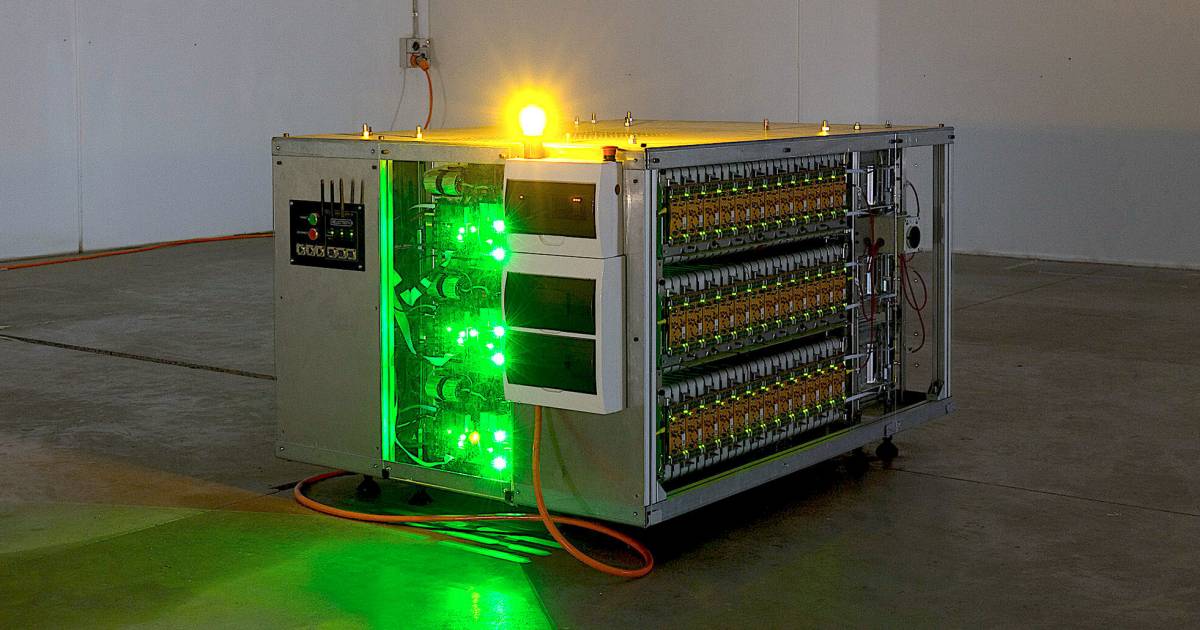
Not quite as sleek as the Tesla Powerpack – but interesting tech.
Melbourne-based Relectrify has officially launched a battery management system (BMS) it says can boost lithium-ion battery service life by as much a third and reduce cost by up to half compared to other market-leading tech.
According to Relectrify, conventional battery management systems monitor and enable low-rate balancing for each battery cell, but the battery pack is controlled centrally; which becomes a problem as cells age and capacity decreases at different rates. The Relectrify BMS not only monitors individual cells, it controls the power flow to and from each cell.
The company’s cell-level BMS also produces grid-compliant AC waveforms, which are generated by “accurately orchestrating a vast number of individual cell voltage contributions within a battery pack” and avoids the need for an external inverter.
Its technology, called BMS+Inverter, is ready for prime time and can be applied to home solar battery systems, industrial and grid energy storage using either new or second-life batteries.
EV battery packs that have reached the end of the road (so to speak) still have a significant amount of their original capacity remaining, making them useful in other applications. However, weak cells impact the performance of the whole battery. Relectrify’s technology can identify the weaker cells, drawing less energy from those while drawing more from the stronger cells. The system is also able to disengage individual troublesome cells.
Relectrify says BMS+Inverter is already being used in various projects including a grid storage pilot with Nissan North America and American Electric Power (AEP).
For residential and small commercial installations, modular systems including second-life batteries alongside a single-phase BMS+Inverter produced in volume are indicatively priced from US$160/kWh for 24kWh1/ 8kW – so around AUD $234/kWh at current exchange rates.
For commercial and utility 72kWh2/25kW modular packs, which utilise the three-phase BMS+Inverter, battery modules and racking, are indicatively priced from US$150/kWh.
“Relectrify is now at the global forefront of battery cost-competitiveness and within striking distance of the US$100/kWh inverter-integrated pack cost widely viewed as the holy grail of battery storage,” said Relectrify Co-Founder and CEO Valentin Muenzel.
CEFC Bumps Up BMS+Inverter Backing
Coinciding with the launch, Australia’s Clean Energy Finance Corporation announced it had increased its investment in Relectrify with a further $2.5 million through the Clean Energy Innovation Fund.
The firm first saw CEFC cash back in 2017, when a $750,000 equity investment was made to assist Relectrify develop and commercialise control technologies for optimising lithium-ion batteries for electric vehicles and repurposing those batteries once they had reached end-of-life in that application.
“CEFC are so excited about Relectrify because we really like what the technology can do, we think batteries are a huge addressable market, and this is a team that just gets stuff done,” said CEFC Innovation Fund Director, Blair Pritchard.
The Clean Energy Innovation Fund kicked off with $200 million to invest in early-stage clean energy companies. The Fund operates with the assistance of the Australian Renewable Energy Agency (ARENA).

 RSS - Posts
RSS - Posts



OK. I understand the claimed efficiencies but get lost trying to apply this to myself as a residential owner. I see the costs per kw/h but cannot comprehend what that would mean to me should I install a common sized Tesla battery for example. Great to see tech of this type on the improve though.